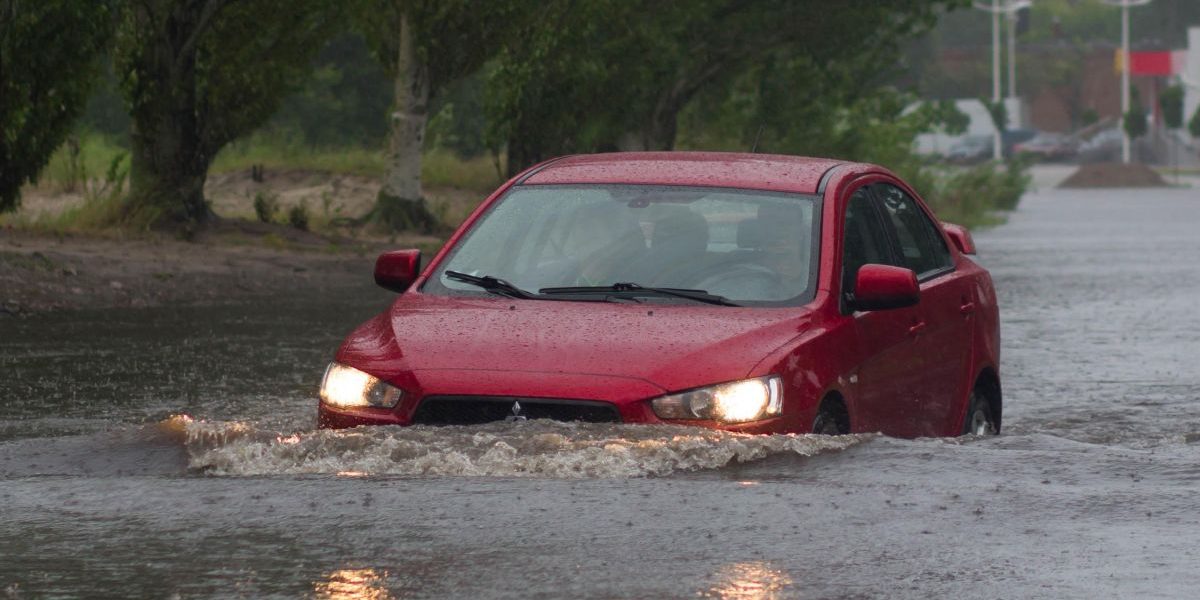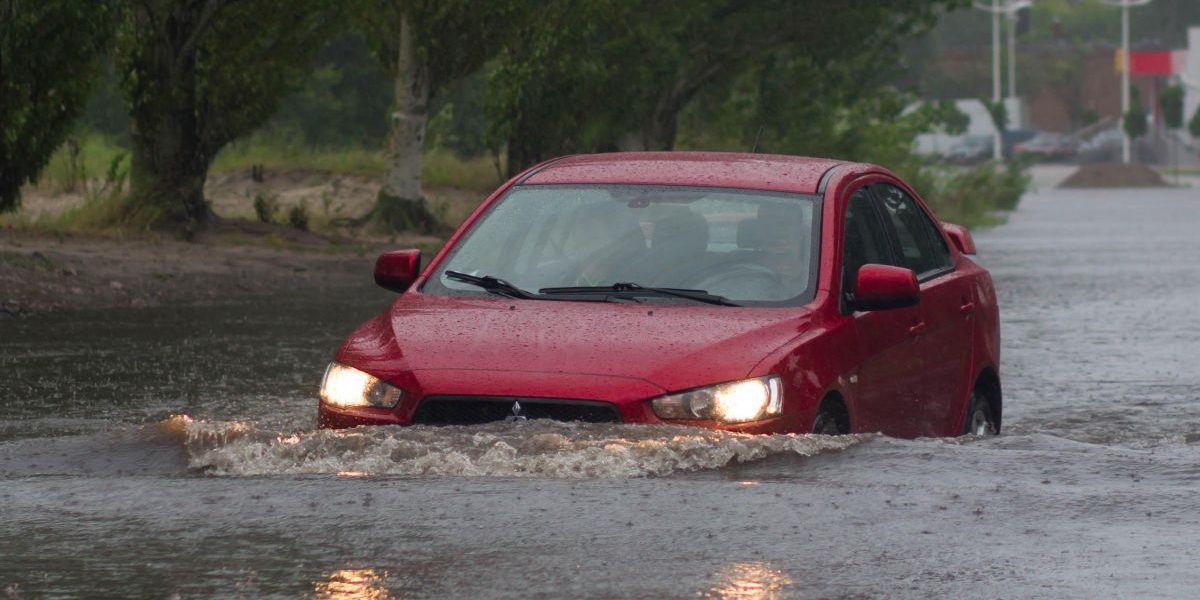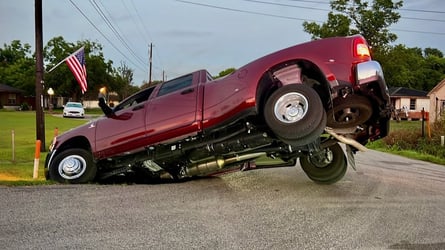Is it illegal to drive in floodwaters or flooded roads?


Across Australia every year there are thousands of people who drive into flooded roadways and need to be rescued. Sadly, some of them don’t survive.
There’s no law against driving on a flooded roads, unless closed However, you could be fined with careless or negligent drivingIt’s really, really dangerous!
So there’s much more at risk than just your pride, your driver’s licence or your car when you think about driving through a flooded roadway.
Yes, your car could be damaged – not just the bodywork, but the mechanical components, electrical and underbody parts. If your air intake gulps in a gutful of water, your engine will be kaput.
Many newer cars also house a lot of complex wiring in the underbody of the car, and that may even mean your vehicle could appear fine on the outside, but be undrivable as a result.
The crazy thing is that, across Australia, there is no specific law that says you can’t drive in flood waters.
Every time there’s a significant weather event, police media and other emergency services work hard to try and warn drivers not to venture into flooded roadways because there is personal and property safety at risk, and indeed, if you were to injure or kill someone by driving on a flooded road, you could face jail time.
“Never enter flood water. If it’s flooded, forget it,” the NSW SES flooding information sheet states.
“The major cause of death during floods is from people entering or travelling through flood water. This includes driving, riding and walking through flood water and children playing in flood water. Flood water may be deeper or faster flowing than it appears and contain hidden snags or debris.
“Flood water may contain chemicals, raw sewage, snakes, spiders and much more that could cause illness and even death. Roads and surfaces underneath flood water often wash away, and may not be visible from the surface.”
Flood waters are often fast-moving bodies of water, and because of the nature of debris and wash-away matter, can be murky and impossible to judge at a glance. Fallen branches or more dangerous obstacles may be hidden beneath the surface. While you might get out and poke a stick in a water crossing when you’re off-roading to check the depth, it is widely accepted that you should not get out of your vehicle and try to do the same in flood waters.
It doesn’t take a lot of water to move a vehicle, either. Studies from NRMA and the University of New South Wales showed that a Nissan Patrol would become unstable in 45 centimetres of water, and float when the water reached 95cm.
Smaller car? Bigger problems. A Toyota Yaris in the same study was swept away at a speed of 3.6km/h in just 15cm of moving water – or, what some might consider a shin-height puddle!
Transport NSW states: “Never drive into flood water. Stay safe and avoid any unnecessary travel. Drivers in high-risk flood areas should be aware of evacuation routes and be prepared before extreme weather events. During floods, follow the advice of authorities and adjust your route accordingly to avoid driving into danger.”
However, while there aren’t specific laws around driving in this situation, a driver found to disobey orders from authorities may be charged with careless or negligent driving. In NSW, that would result in a $481 fine and three demerits. In Queensland, you could be fined $619 and lose three points for driving “without due care and attention”.
In Queensland, however, the department of transport states that you should “not travel in flooded areas unless it is essential”.
“If you must drive in or near a flooded area, try to view updates on road conditions and closures before heading out—so that you can take the safest possible route. But importantly, never attempt to drive across a flooded road,” the QLD Transport department states.
Another way you could get in trouble if you consider driving on flooded roads is if the road has been closed.
For example, in NSW, police can close roads to avoid temporary obstructions or dangerous circumstances, under the Road Transport Act 2013, and in that specific scenario, the law can come down hard on a driver who disobeys the closure, with fines up to $2200 applicable.
If flooding is imminent, make your way to higher ground, and avoid culverts, drains or low-lying roads.
If you find yourself in a life-threatening situation with flood waters, call 000 (Triple Zero).
For emergency help in floods call your state emergency services on 132 500.
Not intended as legal advice. Check with the relevant roads authority in your state or territory.









